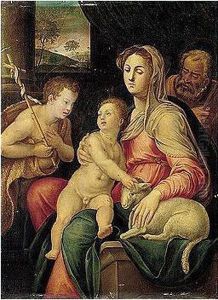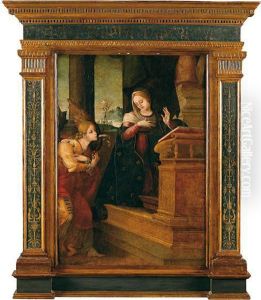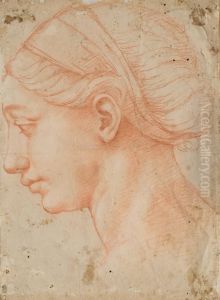Raffaellino Del Colle Paintings
Raffaellino del Colle, born in 1490 in Borgo Sansepolcro, Tuscany, was an Italian painter of the High Renaissance and Mannerist periods. He was a contemporary and, in many ways, a follower of the great Raphael, from whom he derived his nickname 'Raffaellino,' indicating 'little Raphael.' His work, however, also shows the influence of other masters of his time, bridging the transition from the High Renaissance to Mannerism with his style and compositions.
Raffaellino's training began in his hometown, but he soon moved to Rome to further his art education and career. In Rome, he became associated with the workshop of Raphael, working on various projects, including decorations in the Vatican. His contributions were mostly in collaboration with others, making it difficult to attribute specific works solely to him. However, his involvement in these significant projects under Raphael's direction had a profound impact on his style, blending Raphael's harmony and grace with his own unique elements.
After Raphael's death in 1520, Raffaellino continued to work in Rome before returning to Tuscany, where he became a prominent painter in his own right. In Tuscany and Umbria, he worked on several important commissions, including frescoes and altarpieces for churches and civic buildings. His works from this period show an increased influence of Mannerism, with more elongated figures and a more dramatic use of color and light, reflecting the changing tastes of the time.
Raffaellino del Colle's career spanned several decades, during which he witnessed the transition from the High Renaissance's idealized beauty to the more complex and stylized approach of Mannerism. Despite not achieving the same level of fame as some of his contemporaries, his work remains an important link between these two pivotal periods in art history. He died in 1566, leaving behind a body of work that continues to be studied and admired for its contribution to the development of Italian Renaissance art.


